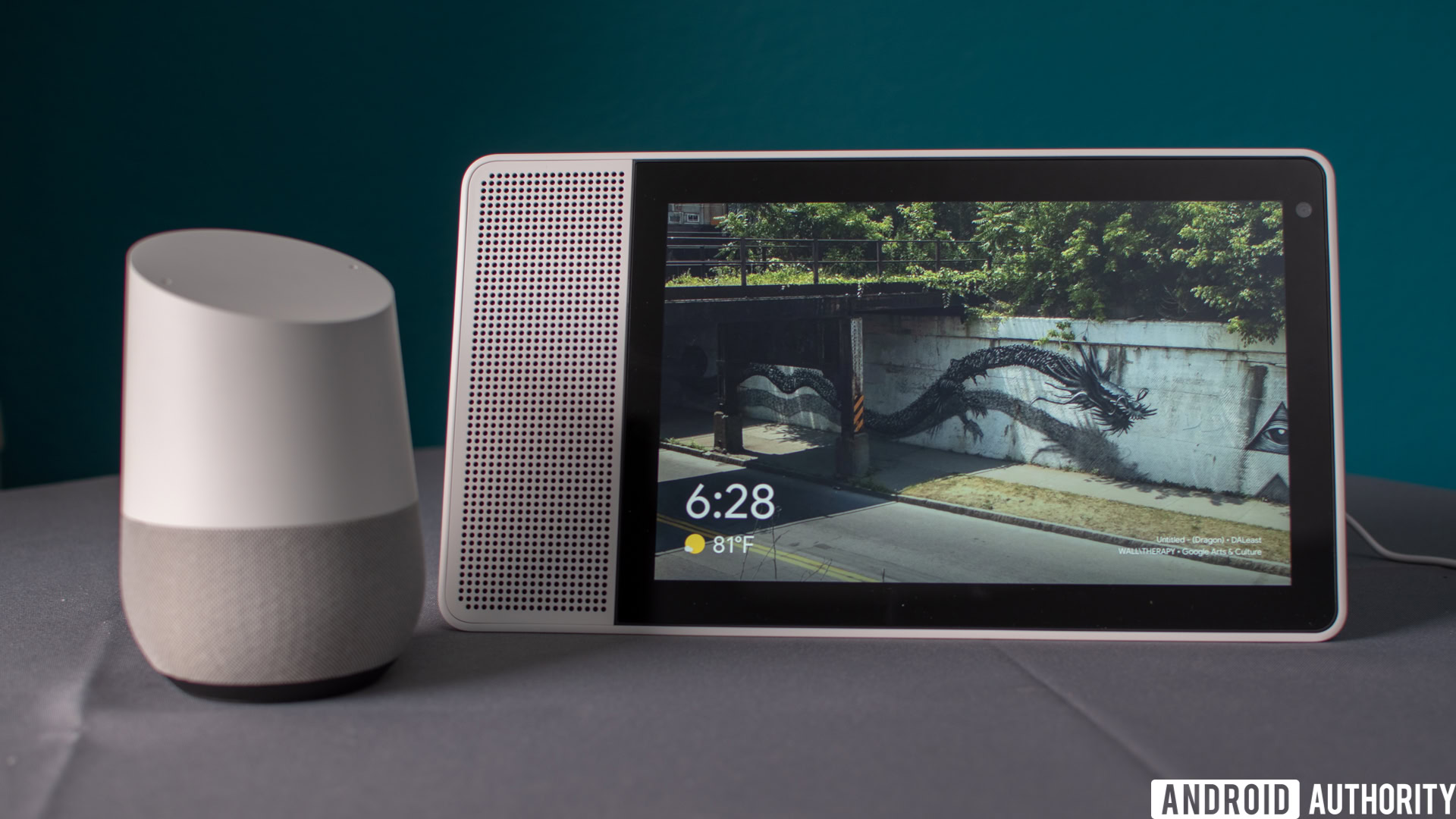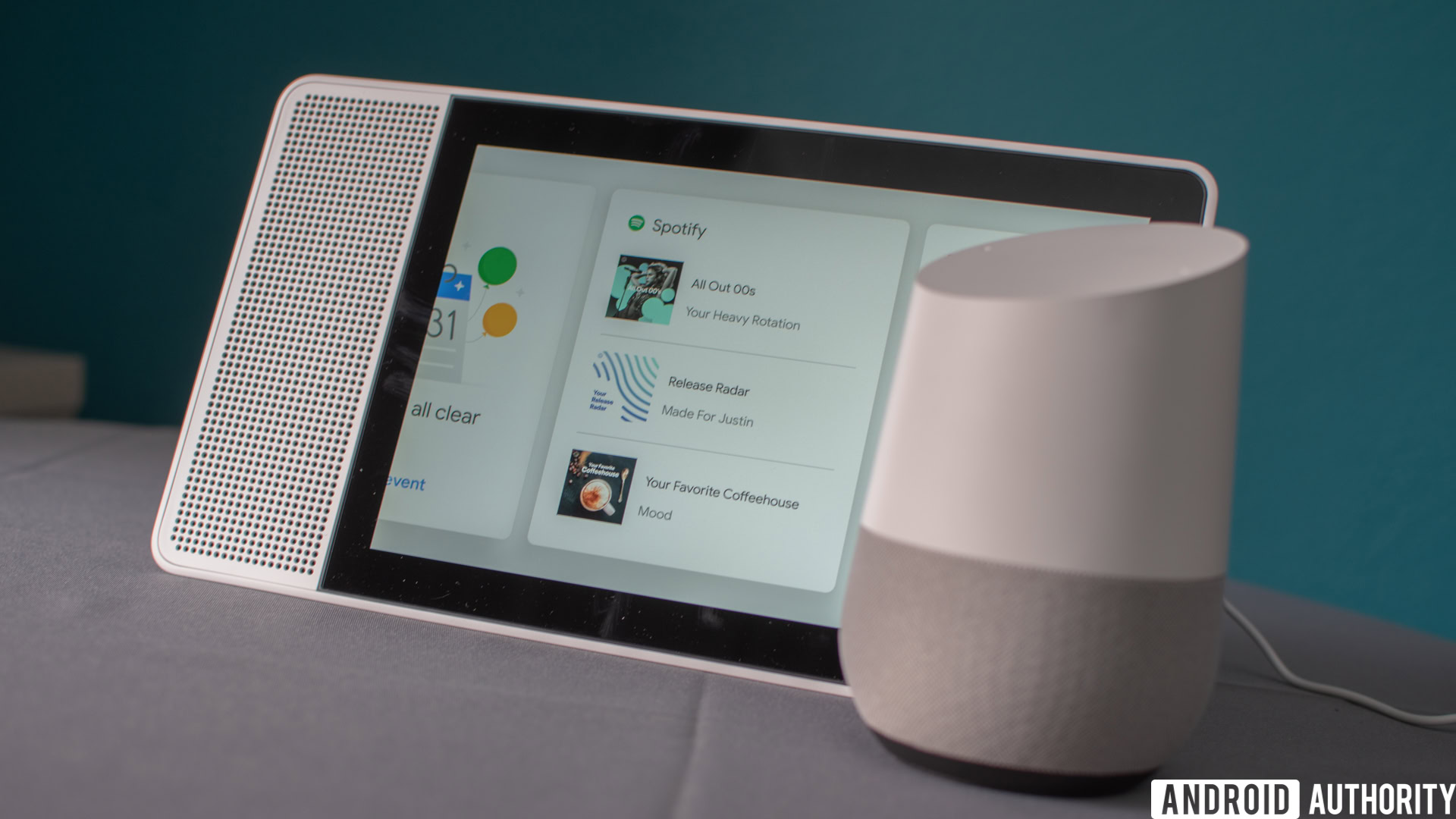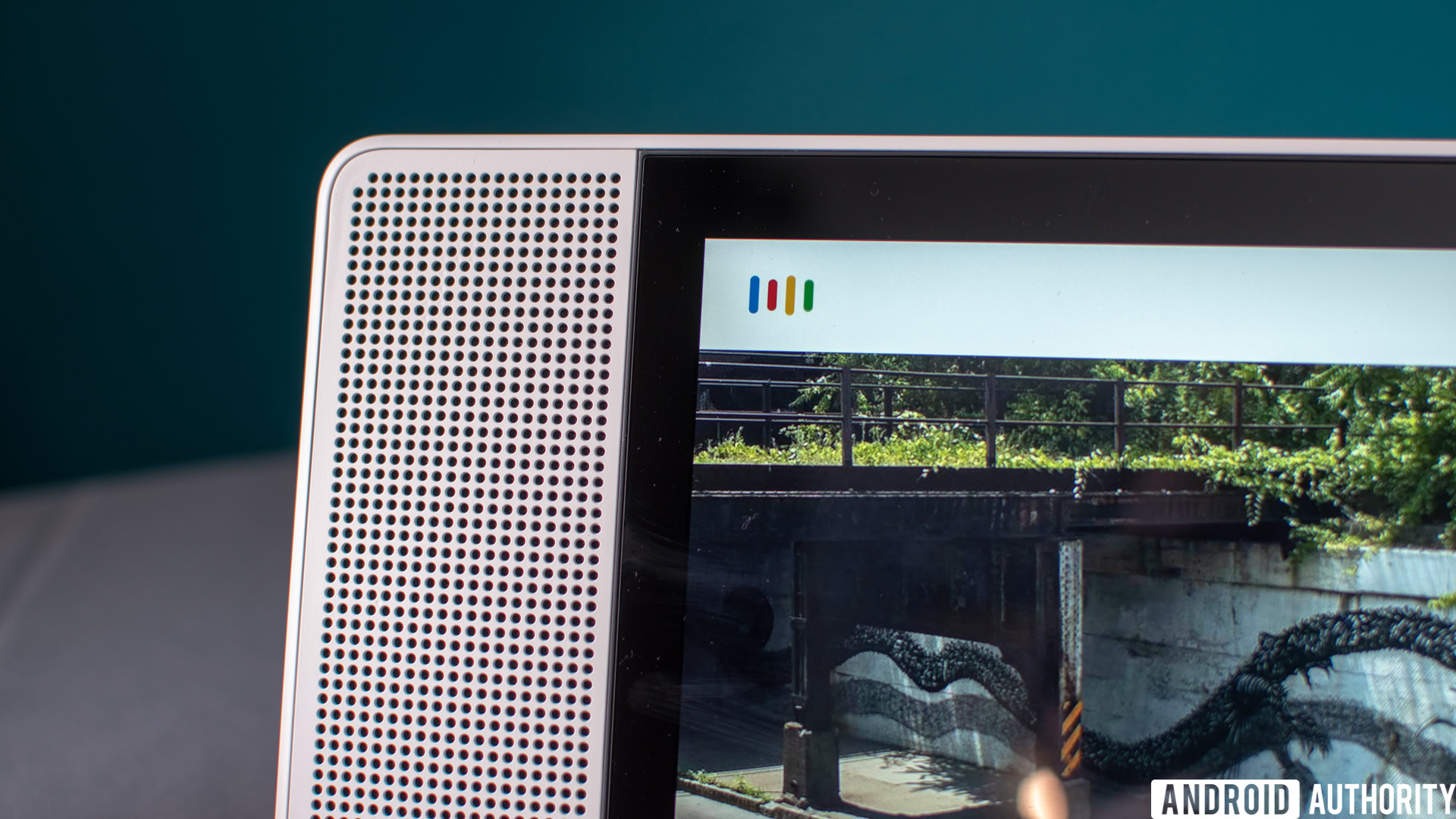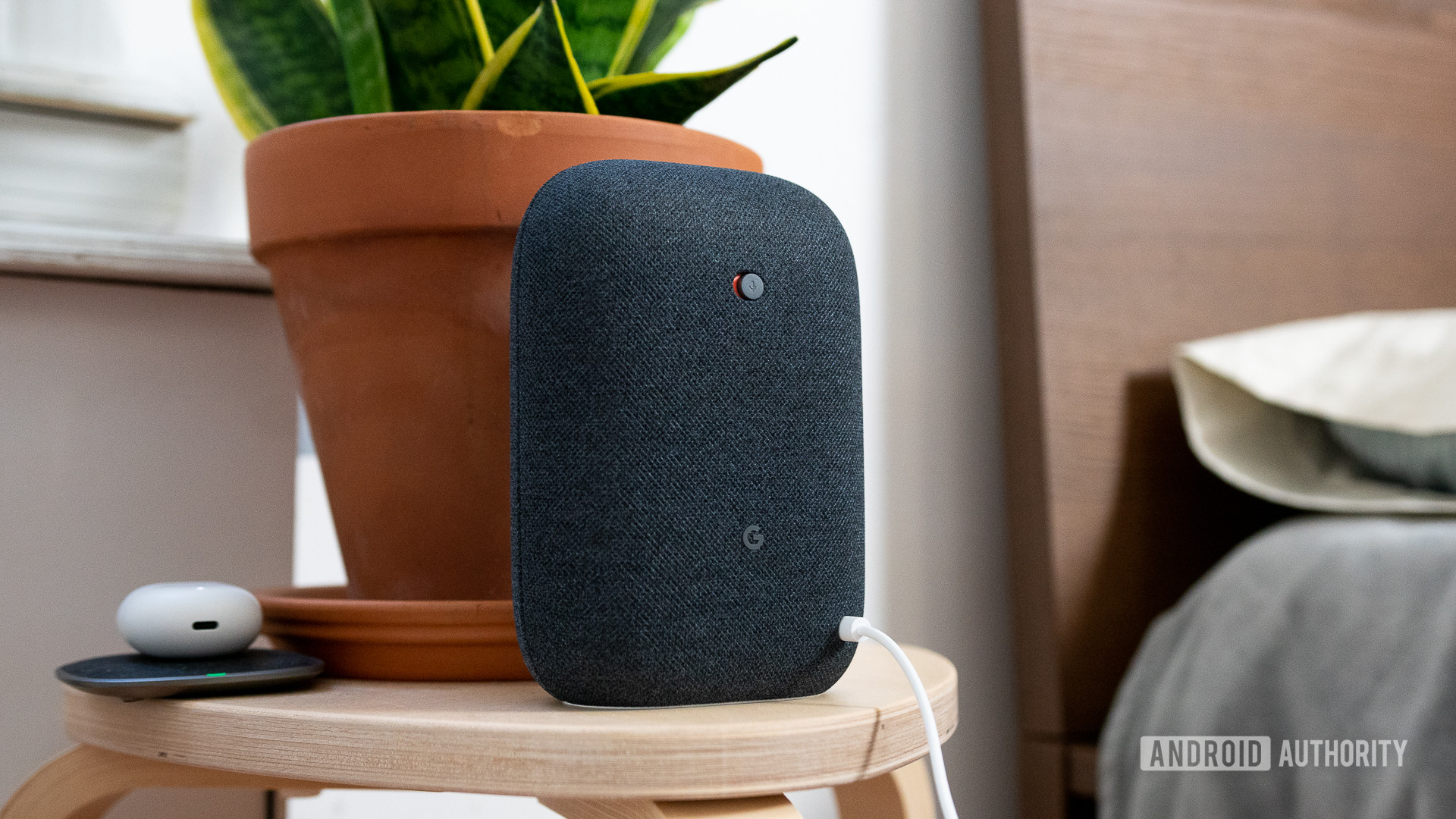Affiliate links on Android Authority may earn us a commission. Learn more.
PSA: Smart Displays aren't a replacement for your Google Home — at least not yet

- Despite having almost identical features, it’s important to note that Smart Displays are not Google Homes.
- While both are powered by the Google Assistant, there are some small feature differences.
- Going forward, Google could either bring to the platforms closer or continue to differentiate each from one another.
The smart assistant war has been raging on for several years now between Google and Amazon. While everyone has their preference between the Assistant and Alexa, Amazon has had a leg up in regards to hardware because the company has had two Echo speakers with displays.
While both smart assistant ecosystems thrive when giving vocal responses, having a display provides more details and allows users to visualize information. This addition to a plain speaker can make for a huge difference for the overall experience. So with all of this in mind, no one was shocked when Google announced the Smart Display product category that would compete with the Amazon Echo Show and Echo Spot.
Smart Displays, which run Android Things and are powered by the Google Assistant, are marketed using the same techniques used to sell Google Homes and third-party Google Assistant speakers. Customers can ask basic queries, find information about the weather, control smart home tech, place phone calls, listen to music, and much more.
Thanks to these glaring similarities, it’s not hard to see why many customers might see Smart Displays and Google Homes being an almost identical product. While Google has never stated that they were the same, it’s good to know what features are missing from Smart Displays that users might be used to using on Google Homes or Google Assistant speakers.
Audio grouping

As someone who owns and uses three Google Homes and one Google Assistant speaker in a small one-bedroom condo, I love the multi-room audio grouping feature. Instead of just having music playing back in a specific room, I can have the audio played back throughout my entire living space.
As the Lenovo Smart Display has a decent-sized 10W built-in speaker, music played from the device fills the room and sounds pretty good. So after I finished setting it up, I decided to rehome my kitchen’s Home Mini and would rely on the Smart Display as my main entertainment speaker in that room. I quickly learned, though, that I couldn’t add it to my house-wide sound system.
Hey Justin, thanks for your tweet. Multi-room audio group would only work with any combination of Google Home, audio devices or speakers with Chromecast built-in. We’re always looking for ways to improve and we appreciate your feedback.— Made by Google (@madebygoogle) August 1, 2018
As you can see from Google’s response to my tweet about the issue, audio grouping only works between Google Homes, audio devices with Chromecast built-in, or speakers with a Chromecast audio plugged into it.
Why don’t Smart Displays have Chromecast built-in? The simple answer to that is that, yes, they do. So then what’s the problem here? Why can’t Smart Display get grouped with other audio devices like Google Homes?
The best we can figure is that the feature was designed to simultaneously play audio on multiple devices, but Google never figured out a way to include devices that would require something is displayed visually. This lack of software functionality would explain why standard Chromecasts that are plugged in televisions aren’t an option for audio grouping.
So with the introduction of Smart Displays, Google still hasn’t developed a way to have that visual representation work alongside the grouped audio. This problem seems like a task that the search giant could tackle fairly quickly, but there might be some sort of limitation that the public is unaware of.
The Made by Google Twitter account gave us the canned “we’re always looking for ways to improve and we appreciate your feedback” response, so we’re not sure if this feature will or could ever make its way to Smart Displays. If enough people ask for it, though, it could be something added in a future update.
Continued Conversations

At the I/O ‘18 developer conference, Google announced Continued Conversations. This feature allows Google Homes and Google Assistant speakers to continue listening for follow-up queries or commands without the user having to state Okay or Hey Google repeatedly.
As it was a highly requested feature, this addition made sense. So with the release of Google’s Smart Displays, the lack of Continued Conversations functionality is overly apparent.
Continued Conversations is such a simple feature that the fact it wasn’t included doesn’t make much sense. As the Smart Display is more inviting and immersive, it would make sense that someone would stand in a single place and interact with the device. But instead, users will have to use the Okay or Hey Google hotword if they want to quickly move past the first answer that was given to them by the Google Assistant.
Casting Netflix to the display
Now, this next issue isn’t technically a feature that differentiates Google Homes from Smart Displays, but it is one that should be discussed.
It would be a wasted opportunity if users couldn’t take full advantage of the screen on Smart Displays. As these devices are primarily meant to be kept in high-traffic locations like the kitchen, Google added the ability for users to cast their favorite movies and TV shows to the Smart Display. The overall functionality is no different than if a customer had a small television with a Chromecast plugged into the back which was used while cooking or washing dishes.
But while owners can watch YouTube, YouTube TV, Hulu, Play Movies, and much more on these Smart Displays, Netflix is weirdly unsupported. Unfortunately, we have not been given a reason as to why Smart Displays aren’t supported by the video platform. It’s almost like Google is now giving companies like Netflix the ability to certify and pick which Chromecast-enabled devices it would like to support.

Going forward, we could either see Google bring the Smart Display platform closer to its Google Home line or take them down separate paths. The audio grouping functionality and continued conversation could likely be added to Smart Displays pretty easily, but Google would likely only do that if the company wanted identical functionality on both platforms.
Are there any other features that you love using on the Google Home or Google Assistant speaker that’s missing from Smart Displays? Let us know in the comment section below.